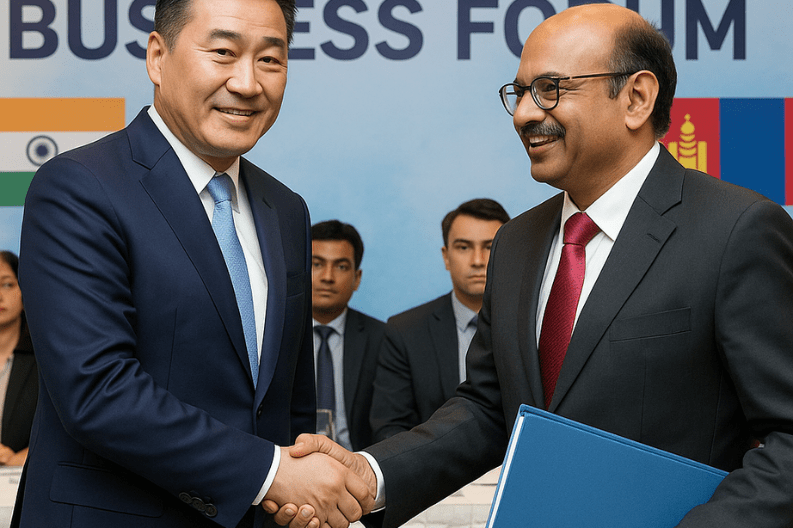Mongolia invites Indian companies to invest in its vast natural resources and expanding industries. This move opens major opportunities for collaboration between the two nations. Mongolia’s Deputy Prime Minister S. Amarsaikhan extended the invitation during the India-Mongolia Business Forum on October 15 in New Delhi. The event aimed to deepen bilateral trade and strengthen economic partnerships.
Amarsaikhan highlighted several key sectors for Indian investors. These include mining, oil exploration, railroads, manufacturing, healthcare, animal products, banking, finance, tourism, and information technology. He urged Indian oil companies to explore Mongolia’s oil fields. New infrastructure will be ready in two years to support these operations.
The event was jointly organized by the Confederation of Indian Industry (CII), the Mongolian National Chamber of Commerce and Industry (MNCII), and the Embassy of Mongolia. It served as a platform for government officials, business leaders, and experts to explore new areas of cooperation.
Mongolia’s strategic location between China and Russia makes it a perfect gateway for Indian businesses. Its Free Trade Agreements with Japan and other countries further improve market access for Indian exporters.
A major milestone is the construction of Mongolia’s first oil refinery. The Indian government is funding this project with $1.7 billion. Once operational, the refinery will meet about 50% of Mongolia’s petroleum demand and reduce its reliance on imports. This project reflects the strong strategic ties between the two countries.
Amarsaikhan also spoke about Mongolia’s “Third Neighbour Policy.” This foreign policy aims to strengthen ties beyond its immediate neighbors. He described India as one of Mongolia’s most trusted partners, especially in energy, infrastructure, and digital innovation.
Indian Ambassador Atul Malhari Gotsurve highlighted the vast potential of Mongolia’s rich reserves. These include coking coal, gold, and copper, which present strong opportunities for Indian mining companies. He also noted a trade treaty between Mongolia and Russia. It offers a 50-60% tariff rebate on goods transported to Russia, giving Indian exporters a major advantage.
Other promising sectors include automobiles, pharmaceuticals, and advanced technology. Lkhagvajav Baatarjav, President of MNCII, emphasized the need for deeper cooperation in IT, tourism, and industrial innovation.
During the forum, Madhav Singhania, past chairman of CII Northern Region, proposed a six-point agenda to strengthen ties. So, this includes collaboration in critical minerals, renewable energy, e-mobility, traditional medicine, startup innovation, and cultural exchange. These areas will help build long-term partnerships that benefit both economies.
The discussions also focused on agribusiness, renewable energy, infrastructure, transport corridors, gold refining, and mineral supply chains. Industry leaders from both countries shared strategies to promote joint ventures and boost trade.
In conclusion, Mongolia invites Indian companies to invest reflects a growing partnership built on shared growth and strategic collaboration. However, with strong government support, ideal geography, and abundant resources, Mongolia offers Indian businesses a gateway to new markets and long-term investment opportunities.



